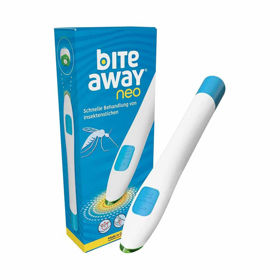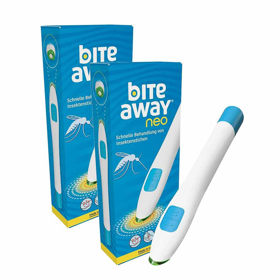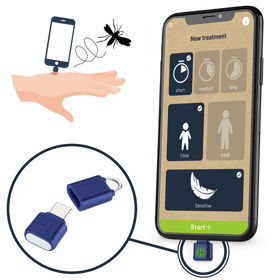A wasp or bee sting is often very unpleasant and painful - more unpleasant consequences can often result from an allergic reaction to wasp or bee venom. If you are allergic, a quick reaction and first aid after a sting are critical, as they can effectively reduce unpleasant symptoms and the likelihood of further complications.
WAP OR BEE STING: General about wasp/bee sting | Symptoms | Consult a doctor | Causes of problems after peak | Diagnostics | Treatment | Conventional Medicine | Alternative way | Prevention | Questions and Answers | Sources/references
The venom released from a bee or wasp sting causes local swelling, pain, and redness, which usually disappear after a few hours. However, some people allergic to such a poison have more significant local reactions with more extensive involvement.
In about three percent of people, stings can trigger a life-threatening allergic reaction called anaphylaxis. The painful hives and swelling can spread rapidly and block the airways, leading to circulatory collapse and sometimes death. If you are stung by a swarm of 50 to 100 bees, the effect can be the same as in anaphylactic shock.
Video content: the difference between a wasp sting and a bee sting.

The only insects with actual stings belong to the genus Hymenoptera, including Apidae (bees and bumblebees) and Vespidae (wasps, white-headed hornets, and yellow hornets).
Video content: more about wasps and bee stings

The stinging mechanism is hidden in the female's abdomen and consists of a stinger attached to a venom-filled sac. A bee stinger has multiple barbs and therefore tends to remain in the wound, resulting in the death of the bee. Wasps, whose stingers do not have spines, can sting several times.
SYMPTOMS
In most cases, a bee or wasp sting causes only minor symptoms at the site of the sting, namely:
- pain;
- swelling;
- redness;
- itching and burning sensation.
Allergic reactions can cause significant swelling. Allergies are also responsible for a much more severe and sometimes even life-threatening condition called anaphylactic shock.
Several stings at once can trigger a toxic reaction with the same symptoms:
- rapid swelling around the eyes, lips, tongue, and throat;
- breathing problems;
- wheezing or hoarseness;
- itching, squeezing, or tingling, which can be severe;
- dizziness;
- reddish rash or hives;
- abdominal cramps;
- loss of consciousness.
CONSULT YOUR DOCTOR IF
- you get stung and get the symptoms of anaphylactic shock listed above. Get medical help immediately.
- You are allergic to bee stings or wasp stings and have been stung. You risk developing anaphylactic shock, even if you have had a milder reaction to previous injections. You may need emergency treatment.
(See your doctor to determine if you are allergic.)
CAUSES
Hymenoptera venom contains toxins and inflammatory substances that cause local pain and swelling, disappearing after a few hours. Some people, however, may be allergic to the components of the poison and therefore have more severe reactions, ranging from more extensive swelling to conditionally fatal anaphylactic shock. The phenomenon of allergy triggered by a tick is not yet well understood. As with other allergies, mite allergy also runs in certain families. However, scientists still do not know why only 60% of allergic adults and only 8% of allergic children get a shock due to stings.
Video content: the consequences of a wasp sting allergy can be fatal.

The same person can be stung several times and always have a normal reaction, but then suddenly, one sting causes a strong allergic reaction. Doctors do not know why a person suddenly becomes so sensitive, nor why such sensitivity sometimes lasts less than three months and sometimes more than 25 years.
DIAGNOSTIC PROCEDURES
Your doctor can determine whether you are allergic to bee or wasp stings with a simple skin test using purified and dried venom. However, only 20% of people with a positive skin test get a severe reaction to the actual sting.
HEALING
Most stings require minimal treatment, such as a cold compress or an ice cube.
Video content: how to adequately react to an ax attack

You will likely need immediate medical attention if you get multiple stings or have a severe allergic reaction.
CONVENTIONAL MEDICINE
For pain, take acetylsalicylic acid or paracetamol. You can try diphenhydramine or some other over-the-counter antihistamine for a stronger reaction. For children, use cough medicines that contain antihistamines (avoid acetylsalicylic acid because of the risk of Reye's syndrome).
For anaphylactic shock, the bronchodilator adrenaline is usually the most appropriate drug. You may inject yourself from a ready-made bee sting kit, but even after the injection, you must see a doctor immediately for further treatment. (Remember: Kits against bee stings are intended for adults, for children, read the instructions first.)
ALTERNATIVE HERBS METHODS
Anoint yourself with aloe (Aloe barbadensis), freshly pressed leaves, or plantain juice. Or apply calendula ointment (Calendula officinalis) four times a day.
HOMEOPATHY
The homeopath will probably recommend applying a few drops of over-the-counter pyrethrum tincture to the spot. Then, take apis (30c) every 30 minutes to two hours to prevent breakouts.
HOME REMEDIES
If the stinger remains in the skin, remove it with a knife or fingernail. If you use tweezers, more venom may be squeezed into the wound. For bee stings, a layer of baking soda relieves itching. Wasp stings are alkaline and can be neutralized with vinegar or lemon juice. But if you are far from home, smear yourself with mud. It will also draw some poison from the body when it dries up.
PREVENTION
To prevent the shock caused by an insect sting when you are allergic to it, carry a bee sting kit (check beforehand if you know how to use a self-injector). You must also wear a pendant or bracelet with a tag that describes your allergy. Suppose you severely reacted to the sting and tested positive for venom. In that case, venom immunotherapy is very effective - a series of weekly venom injections in small doses, so-called desensitization, as it can prevent anaphylaxis.
Video content: prevention of wasp or bee stings

Reduce the chances of getting stung and avoid bright and pastel colors and white when choosing clothes. Do not use cosmetics or fragrances that have a floral scent. Food smells attract carrion, especially wasps, so be careful when cooking or eating outdoors.
Frequently Asked Questions and Answers
How do you relieve a wasp sting?
You can relieve the discomfort of a wasp sting by cleaning the area thoroughly with soap and water. Next, apply ice (wrapped in a clean cloth is best) to the spot for 10 minutes, remove it for 10 minutes, and repeat the process. If the person has circulation problems, shorten the time the ice is on the sting area to prevent possible skin damage[1].
How serious can a wasp sting be?
Although wasp stings can be painful, isolated ones rarely cause serious problems. However, showing that the poison contains toxins that can cause an allergic reaction in more sensitive people is necessary. About one in ten people stung twice or more become allergic to the species' venom, meaning that such people will have severe reactions to subsequent stings[2].
What do you do if you are stung by a bee?
Keep calm. Although most bees only sting once, wasps and hornets can sting multiple times.
Remove the stinger. Remove the sting if you notice that the sting has remained in the skin (as a bee sting).
Video content: the best tips for bee or wasp stings

Apply a cold compress to reduce swelling. ...
Consider taking medication for pain or allergies[3].
How poisonous is a bee sting?
Melitin is the primary and most toxic compound in bee venom, accounting for 50-60% of the total venom. Melittin causes only minor allergic reactions but causes most of the resulting pain associated with bee stings, which is caused by direct and indirect actions on primary nociceptor cells[4].
Sources and references
Source: Family Health Guide. Conventional and alternative treatment, Dr. Jaro Lajovic, Publishing House Mladinska knjiga
1. Wasp sting - https://www.mountsinai.org
2. European wasp - https://www.betterhealth.vic.gov.au
3. HOW TO TREAT A BEE STING - https://www.aad.org 4. Bee Updated: Current Knowledge on Bee Venom and Bee Envenoming Therapy - https://www.ncbi.nlm.nih.gov












 Facebook
Facebook
 Instagram
Instagram
 info@moja-lekarna.com
info@moja-lekarna.com

